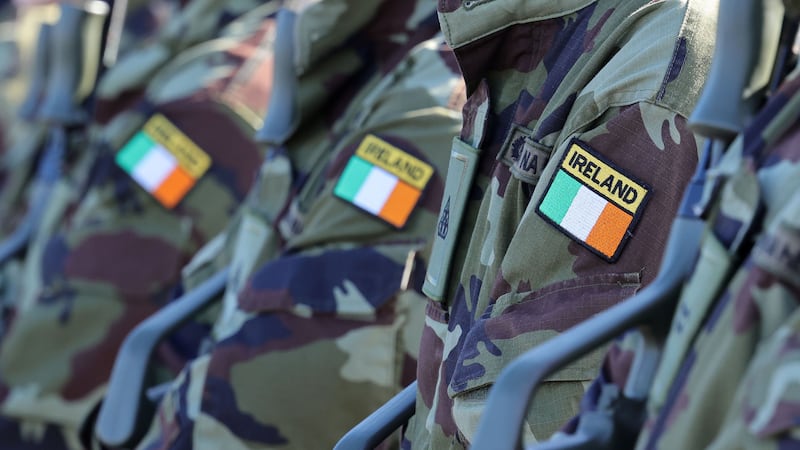I’m glad RTE’s Prime Time made that programme about O’Connell Street, although it was not without its flaws. I feel as though I’ve been shouting into a void for years about the trajectory of our capital. In early March, 2020, before the first lockdown, I wrote about how Dublin was uniquely vulnerable to the impact of a pandemic. I take no joy in seeing what I forecast play out.
There is an almost existential issue at play regarding the Irish capital. It is a complete lack of understanding both at Government level, and at executive level in Dublin City Council about the concept of urbanism, the concept of street life, and the concept of urban character. This lack of sophistication and lack of taste permeates policy, both through action and inaction.
Who lives in the city? Who uses the city? Who is marginalised in the city? And how can their needs be accommodated? Why has street life in the city become so depressed, and where it does exist, is often menacing? Why is substance abuse so rife and so visible in this city? Why do politicians only care about behaviour as an outcome, and not the policies that create that behaviour?
If artists’ needs were understood, cultural amenities and places of creative work would not have been demolished
Why are certain behaviours on the street — violence and drug-taking — seen as the dominant aspect of what is “antisocial”, and not the policies that embed and sustain deprivation, threadbare mental health and addiction services, along with the long-standing absence of a cohesive plan for the city? Are those things not the most “antisocial” behaviours of them all?
READ MORE
If homeless people’s needs were appreciated, there would be public toilets and public seating. If children’s needs were appreciated, safety, accessibility, and a sense of play would be understood. If older people’s needs were appreciated, affordable cafes and restaurants, services, and community gathering spaces would be protected.
If artists’ needs were understood, cultural amenities and places of creative work would not have been demolished. If students’ needs were appreciated, purpose-built student accommodation would not have emerged as luxury Insta-tenements for wealthy international students, but affordable, flexible housing would have been built. If family’s needs were understood, long-lasting large flats would have been built with proper storage, and communal services.
If the climate crisis was appreciated, tree cover, green spaces, sustainable housing, and large-scale pedestrianization would have been prioritised. If the needs of working class communities — the beating heart of Dublin’s population — were recognised, markets, public housing, local independent shops, and community amenities would be a priority.
We need to talk about liveability. We need to talk about design. We need to talk about aesthetic appeal. We need to talk about heritage
But none of this has been prioritised or even recognised. Instead, policy and plans over a decade prioritised four things: hotels for tourists, office development, unaffordable student developments, and luxury apartment developments for tech workers. None of these contribute positively to the city in any meaningful way. They don’t build community. They don’t create a sense of place-making.
They don’t add to the cultural fabric of the city in terms of new creative ideas from which scenes can grow. The knock-on effect has been UK-style homogenisation, and a sucking out of day-to-day retail across everything from haberdashery to homeware, long-standing independent shops to cheaper places to eat and drink, and a landscape devoid of basic facilitates including spaces to hang out in where you don’t have to pay to exist in them.
All of this is of course underpinned by the housing crisis. If you create a city where only wealthy people can afford to rent or buy, then you are going to get one boring place. Young people who can’t afford a place to rent in the capital are leaving en masse. Good news for this Government, of course, bad news for everyone else.
Dublin City Council’s Chief Executive, Owen Keegan, has a contract — extended during the pandemic — which comes to an end in September 2023. Who will take his place? We need someone who understands the potential of Dublin not as a commodity but as a community.
We need to talk about liveability. We need to talk about design. We need to talk about aesthetic appeal. We need to talk about heritage. We need to talk about grain. We need to talk about character. We need to talk about diversity not homogeny. We need to talk about street-making, not development-building. We need to talk about safety. We need to talk about fun. We need to talk about beauty.
We are also deluded about the future of commercial property. All across the city, vast swathes of offices are practically empty. I want to fast-forward to a moment where these buildings are repurposed as housing, and cultural and community spaces. There are empty retail units everywhere, many of these dormant for years because they are impractical spaces.
Where is the policy to fill these with things that contribute to cultural life and community happiness? Where is the plan to return our Georgian streets and squares to housing, and move those using them as offices into purpose-built buildings? Can we not imagine something brilliant and beautiful? Because if those in charge lack the capacity to do so, then they need to get out of the way and allow someone else to present and deliver a vision.












